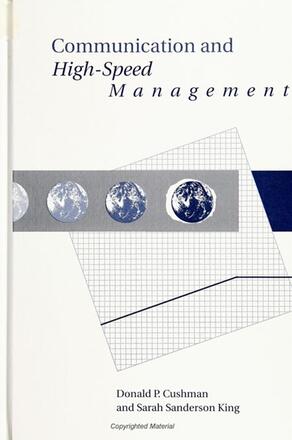
Communication and High-Speed Management
Alternative formats available from:
This book provides a new understanding of the role communication plays in integrating, controlling, and coordinating high performance organizations.
Description
High-speed management is used to competitive advantage by some of the most successful organizations in the world—General Electric; Toyota; ASEA, Brown, and Boveri; Motorola; Intel; and Matsushita. In these very successful companies fast cycle time or high-speed management translates into two important organizational capabilities. First, it creates a high level of performance that management can build into a firm's operating systems. More specifically, increases in effective communication are employed to eliminate bottlenecks, delays, and errors in production, cutting costs and improving quality. Second, high-speed management is an organizational strategy which continuously improves a firm's integration, coordination, and control systems. It transforms all of a firm's communication activities such as leadership, corporate climate, teamwork, worker and unit interfaces, process mapping, and outside linking processes into a more responsive customer adaptation system.
Donald P. Cushman is Professor of Communication at State University of New York at Albany, and coeditor of the SUNY series. Sarah Sanderson King is Professor of Communication at Central Connecticut State University, and coeditor of the SUNY series in International Management. Among the many books the two have written are Political Communication: Engineering Visions of Order in the Socialist World; High-Speed Management and Organizational Communication in the 1990's: A Reader; and Communicating Organizational Change: A Management Perspective.
Reviews
"It is a major contribution to our discipline's body of knowledge, perhaps the most significant, original theoretical development in organizational communication in 25 years.
"Given the intense international competition now faced by virtually all manufacturing companies in an increasingly volatile global economic environment, the economic health, if not the survival of organizations and their parent countries becomes a major concern. Cushman and King's work highlights this global struggle and the communication strategies essential to effectively compete in a turbulent international marketplace.
"Based on a decade of research and thinking, this work is the culmination and assimilation of Cushman and King's best writing. It brings together in one volume an excellent, in-depth summary of the theory and research related to high-speed management, written in a scholarly, yet comprehensible, fashion, and relates high-speed management to the other major management communication concepts which will be affected by current and emerging global factors." — Richard J. Dieker, Western Michigan University